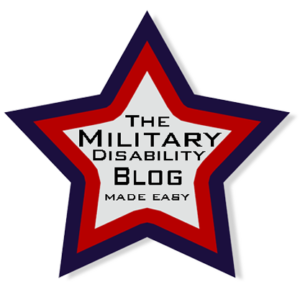What Evidence is Most Important? — The Hierarchy of Evidence for Proving Service-Connection
- Published:
- Last Updated: September 29, 2022

In order for the VA (and DoD) to rate a condition, it MUST be Service-Connected. And it is ultimately your responsibility to submit the evidence necessary to prove service-connection.
Evidence is essential to your military disability.
No evidence = No benefits. No question.
But not all evidence is created equal. The VA will give more “probative value” to some evidence over others. The basic idea is that if the evidence comes from a more official source or from someone with more authority to speak on the topic, then that evidence is more likely to be true and accurate. Thus, evidence from a neurosurgeon will have more probative value than from a chiropractor, an official exposure document will have more probative value than a Buddy Letter, etc.
So when it comes to proving service-connection, what evidence is the best evidence?
Here’s a list of evidence ranked from the most important to the least important for each type of service-connection. Click on the type of service-connection to be taken to the discussion of it on our site so you can know which applies to your conditions.
As you go down this list, if your service-connection is firmly established with evidence you have from #1 and #2, you don’t really need to proceed further. If it isn’t, though, or it could be stronger, then add something from the next number, then the next, etc., until your evidence for service-connection is as solid as you can make it.
Conditions Diagnosed While in the Military
1. Service-Treatment Records (STRs). STRs are your medical records from your time on active duty, so these alone can establish service-connection as long as there is clear record of the diagnosis and subsequent treatments (up to the current condition).
2. Military Personnel Records. As long as the diagnosis and treatments are clear in your STRs, then you only need the following personnel records:
- DD214 is essential in every case to establish your service dates.
- Deployment records are necessary if your condition occurred while deployed.
- Official Exposure records are necessary if your condition was caused by an officially recorded exposure.
- Line of Duty determinations are necessary for Reservists. Reservists must be able to prove that the condition occurred in the Line of Duty in order to be service-connected. If an official LOD is made, then that’s all you need to prove LOD. If you don’t have an official LOD, that’s okay as long as your medical records clearly record how the condition developed in relation to your service. Incident reports or Buddy Letters from those witnessing the event can also be helpful here.
3. Veteran Medical Records. If you are claiming your conditions once you are a veteran, then you need to show that your current condition is the same as the one diagnosed during service. Medical records from your date of separation up to the present (from civilian and/or VA physicians) are essential to show that the condition is not two separate conditions. So if you hurt your back in service, but it healed and there’s no evidence of any other issues for the next 20 years, then you hurt your back again, those are going to be considered two separate conditions and not related.
Conditions Aggravated by Military Service
1. Service-Treatment Records (STRs). STRs are your medical records from your time on active duty, so these alone can establish service-connection as long as there is clear record of how your condition was aggravated by your military service. Your entry examination should thoroughly record the severity of the condition upon entry (if nothing is recorded, it is assumed asymptomatic) and then your STRs over time need to show the abnormal development of the condition caused by service in relation to the standard development of the condition in most cases.
2. Military Personnel Records. As long as the diagnosis and treatments are clear in your STRs, then you only need the following personnel records:
- DD214 is essential in every case to establish your service dates.
- Deployment records are necessary if your condition was aggravated by or during your deployment.
- Official Exposure records are necessary if your condition was aggravated by an officially recorded exposure.
- Line of Duty determinations are necessary for Reservists. Reservists must be able to prove that the condition was aggravated in the Line of Duty. If an official LOD is made, then that’s all you need to prove LOD. If you don’t have an official LOD, that’s okay as long as your medical records clearly record how the condition was aggravated because of your service. Incident reports or Buddy Letters from those witnessing the event can also be helpful here.
Conditions Caused by Service-Connected Conditions (“Secondary”)
1. Service-Treatment Records (STRs)/Military Personnel Records. These are listed first because they are essential in establishing service-connection for the original condition. Once the original condition is firmly service-connected, then you can move on to #2 to connect the secondary condition to it.
2. Veteran Medical Records. All secondary conditions diagnosed after service need clear medical records that show the development of the condition with as much connection to the original condition as possible. If these records don’t connect it firmly to the original condition, then #3 is a MUST.
3. Nexus Letter. A Nexus Letter from the physician that knows your condition the best is VITAL for most secondary conditions. This firmly connects the secondary condition to the original condition.
4. Other Medical Evidence. With the Nexus and the rest of your evidence, your case should be fairly solid. But if it’s not as firm as you like, it could help to submit additional evidence that supports the relationship between your secondary and original conditions. This could be things like legitimate published research studies, medical articles, etc.
If your exposure condition was diagnosed in service, use the first section above to prove it. This section is for exposure conditions diagnosed after service.
1. Military Personnel Records. It is not easy to prove exposure unless there are official exposure records or the condition is on the Presumptive List. Here are the prioritized personnel records that can help establish the exposure:
- Official Exposure records (including Incident Reports) with exact locations, dates, severities, lengths, etc., are very important if you have them.
- DD214 is essential to establish your service dates.
- Deployment records are necessary if the exposure happened during your deployment.
- Duty Assignments can add valuable evidence if you were exposed because of the duty you were performing.
2. Service-Treatment Records (STRs). Since your condition wasn’t diagnosed until after service, there won’t be much evidence of it in here. However, these can provide clues that could support the exposure itself. Maybe you were examined after the incident that caused the exposure? Maybe symptoms appeared soon after the exposure? If you have anything like this in your STRs, it could be additional evidence of the exposure even if they were not attributed to it at the time. The symptoms, of course, would have to be known common symptoms of that type of exposure.
3. Veteran Medical Records. It is essential to show the development and diagnosis of the condition. Any records that include information about the condition’s relation to the exposure are even better.
4. Commander or Buddy Letters. If with the evidence above you have not yet created a strong enough case that the exposure did indeed occur, then Commander and/or Buddy Letters could save the day. A letter from your Commander or any of the people you served with at the time of the exposure can provide valuable testimony to the exposure. Each letter should include as much detail as possible, including dates, locations, type, length, and severity of exposure, etc.
5. Nexus Letter. A Nexus Letter from the physician that knows your condition the best can provide essential testimony that they believe the condition “more likely than not” was caused by the exposure.
6. Personal Statement. If there are no official records of the exposure, then you will need to write a personal statement detailing everything you can about the exposure itself, including dates, locations, type, length, severity of exposure, etc. This information will be strongest when matching the other evidence noted above.
Conditions on the VA Presumptive List
1. Military Personnel Records. For conditions on the VA Presumptive List, it is essential to prove the service requirements of the appropriate category.
- DD214 is essential to establish your service dates and length.
- Deployment records and Duty Assignments are necessary to prove that you served in a certain place at a certain time. Make sure these records also show how long you were in that location.
- Prisoner of War records are needed if you are applying for a condition on the POW list.
- Any other personnel records that support the requirements on the appropriate Presumptive List.
2. Veteran Medical Records. It is essential to show the development and diagnosis of the condition. Most of the Presumptive List categories require the condition to have developed to a certain severity by a certain time, so this proof must be found in the veteran medical records in order for the conditions to qualify.
3. Commander Letters/Buddy Letters/Personal Statements/Service Treatment Records. These are really only useful for the Mustard Gas or Lewisite Presumptive List since there are few official records of exposure that were kept at this time. Because of this, as much evidence surrounding the exposure as possible, the stronger your claim will be. A personal testimony also providing as many details as possible will be essential. Testimonies from your commander or others present that corroborate the personal statement are valuable evidence of exposure. Service treatment records detailing anything from the exposure event or the immediate effects of the exposure can also help. The more you can provide, the better.
That’s all the evidence needed for each type of Service-Connection. Remember that the evidence with the highest probative value will hold the most weight and influence, but it’s always better to be safe than sorry, so including as much other evidence as possible as well definitely won’t hurt.
Recent Posts
TDRL vs. PDRL—Which is better for disability benefits?
Leukemias and Multiple Myelomas NOW on the Presumptive List
Two MORE Conditions added to the Burn Pit Presumptive List
The 2025 VA Disability Rates are here!
About Us









